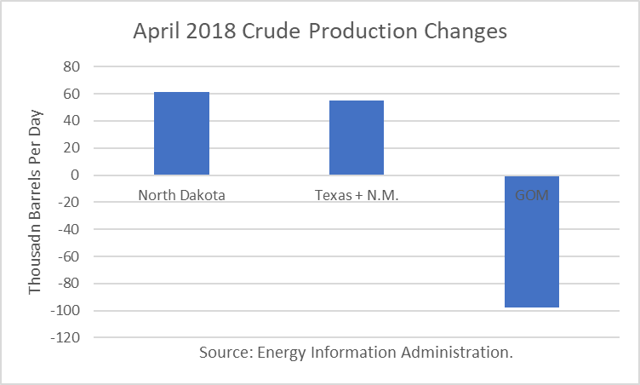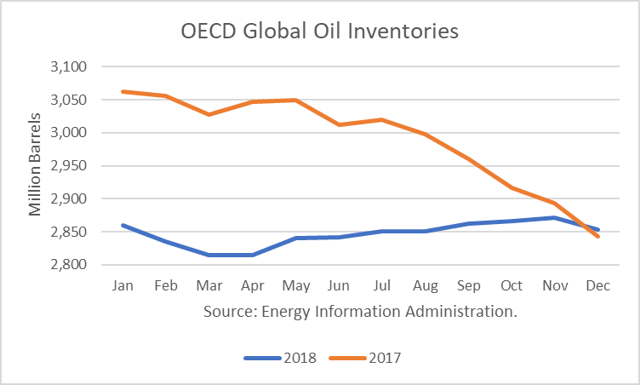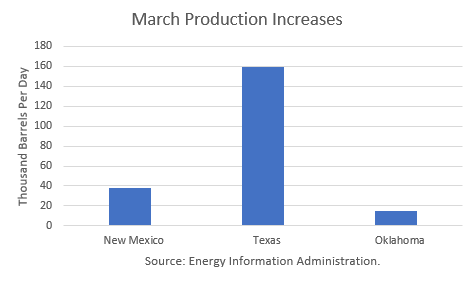The Energy Information Administration reported that April crude oil production averaged 10.467 million barrels per day (mmbd), off 2,000 b/d from March’s all-time record high for the U.S. The small but unexpected decline was due to unplanned maintenance in the Gulf of Mexico (GOM), which reduced production there by 98,000 b/d. Otherwise, healthy increases were recorded in North Dakota (61,000 b/d) and Texas + New Mexico (55,000 b/d).

The EIA-914 Petroleum Supply Monthly (PSM) figure was 115,000 b/d lower than the weekly data reported by EIA in the Weekly Petroleum Supply Report (WPSR), averaged over the month, of 10.582 mmbd. EIA’s most recent weekly estimate for the week ending June 22nd was 10.900 mmbd. Continue reading "U.S. Crude Production Growth Stalled In April"



